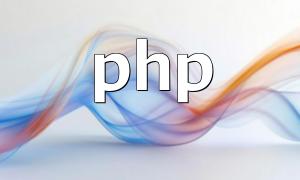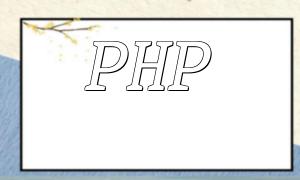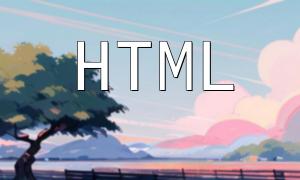What is an XSS Attack?
Cross-site scripting (XSS) attacks are a common web application vulnerability where attackers inject malicious scripts into a victim's browser, stealing sensitive information or performing unauthorized actions. XSS attacks pose serious threats to user privacy and security, and can lead to data breaches or account tampering. Understanding the different types of XSS attacks and how to prevent them is crucial for developers.
Different Types of XSS Attacks
- Reflected XSS - Reflected XSS occurs when user-supplied data is not properly sanitized or encoded and is immediately included in the webpage output. Attackers create malicious URLs or forms to trick users into executing injected scripts in their browser.
- Stored XSS - Stored XSS, also known as persistent XSS, involves injecting malicious scripts that are stored on the server and then served to users accessing specific pages or resources. When unsuspecting users visit these pages, the injected scripts execute, potentially compromising their accounts or exposing sensitive data.
- DOM-based XSS - DOM-based XSS attacks target the document object model (DOM) of a webpage. Instead of modifying the server response, attackers exploit vulnerabilities in the client-side JavaScript code to insert and execute malicious scripts. The malicious code interacts with the DOM to change the page content or steal critical data.
How Are XSS Vulnerabilities Exploited?
XSS vulnerabilities can be exploited in various ways, depending on the attack type and the environment. Attackers may use the following methods:
- Injecting script tags or event handlers into user input fields, comments, or chat messages.
- Exploiting JavaScript functions and objects to execute arbitrary code.
- Triggering XSS vulnerabilities by manipulating URL parameters or form inputs.
By understanding how XSS attacks work, developers can better detect and fix vulnerabilities in their web applications.
Techniques to Prevent XSS Attacks
To protect our website from XSS attacks, several techniques are commonly used. Below are some key methods:
Input Validation and Sanitization
Input validation is a critical step in filtering and sanitizing user inputs. Developers can use either a whitelist (only allowing specific characters or patterns) or a blacklist (disallowing known harmful inputs). Here are some commonly used PHP functions for input validation and sanitization:
- filter_var() - A versatile function that provides various filters to validate and sanitize different data types, such as verifying email addresses and sanitizing URLs.
- strip_tags() - Removes HTML and PHP tags from a string, effectively sanitizing input and preventing potentially harmful code execution.
- preg_replace() - Allows for regular expression-based search and replace operations. This is useful for more advanced input sanitization tasks, such as removing or replacing specific patterns or characters.
- strlen() - Returns the length of a string. It can be used to validate input length and enforce length restrictions.
- addslashes() - Adds backslashes before characters that have special meaning when processing SQL queries or handling data stored in databases.
Output Encoding
Output encoding is important to prevent scripts from being executed. Using functions like htmlspecialchars(), developers can convert special characters into corresponding HTML entities to ensure that user-generated content is displayed safely. Some examples of how htmlspecialchars() prevents XSS include:
- “&” becomes &
- “"” becomes "
- “>” becomes >
- “<” becomes <
- “'” becomes '
Content Security Policy (CSP)
Implementing a Content Security Policy (CSP) can help mitigate XSS risks by specifying trusted content sources. For instance, using the “default-src 'self'” directive limits resource loading to the same origin, reducing the risk of malicious script execution. Here’s an example of how to set it up:
header("Content-Security-Policy: default-src 'self'");
This example enforces the “self” directive for the default-src, which restricts resources to be loaded from the same origin, effectively preventing unauthorized script execution.
Using Prepared Statements and Parameterized Queries
SQL injection is a common attack that can lead to XSS vulnerabilities. Prepared statements and parameterized queries help prevent such attacks by ensuring that user inputs are treated as data and not part of the code. Here’s a PHP example:
$stmt = $pdo->prepare("SELECT * FROM users WHERE username = ?");
$stmt->execute([$username]);
In this example, user input is separated from SQL code, preventing SQL injection attacks.
Using Third-Party PHP Libraries
There are several PHP libraries designed to make security measures easier to implement and offer strong defenses against XSS vulnerabilities. Some popular libraries include:
- HTMLPurifier - A powerful library that filters and sanitizes HTML input, removing potentially malicious or unsafe code. It ensures that only safe and valid HTML is allowed, preventing XSS attacks through contaminated user input.
- AntiXSS - A library developed by Microsoft to encode user input in various contexts (HTML, JavaScript, URL, and CSS) to mitigate XSS vulnerabilities.
- PHP Security Advisories - A Composer plugin that scans project dependencies for known security vulnerabilities. It helps identify libraries with known XSS vulnerabilities and recommends updates to safe versions.
- HTMLSafe - A library that provides secure, context-aware HTML output. It automatically applies appropriate encoding based on the output context to prevent XSS attacks.
Conclusion
In this article, we explored various methods to prevent XSS attacks in HTML/PHP applications. By applying techniques like input validation, output encoding, content security policies, and using third-party libraries, developers can effectively protect their web applications from XSS vulnerabilities.









